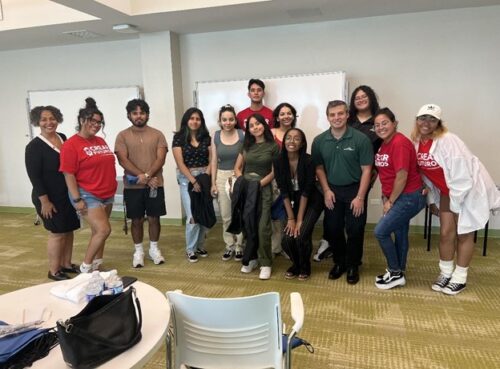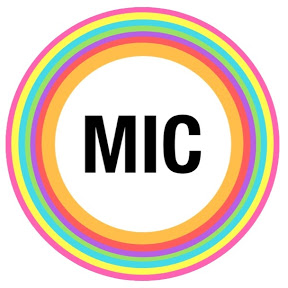
Fashion is a means of self-expression and “how people present themselves.” It is the practice of using clothing to convey your sense of beauty. Fashion is the act of wearing clothing in a way that enhances your physical features while also demonstrating to others your superb sense of style. In a broader sense, it is also “a reflection of the society we live in,” claims Sew Guide magazine.

Classic wearing for women in the 1900s
Fashion in the 1900s emphasized modesty and resembled the fashion of the nineteenth century. Dresses that covered women from neck to toes were commonly worn in different soft colors and silky fabrics.
The corset, which made women look slimmer with narrow waists and made the upper part of the body bigger than the lower part, was a dominating element in fashion for women.
Event-specific dressing was increasingly important, and “smart people took care to dress appropriately for the occasion. The wealthiest women had multiple costumes, ranging from theatre and evening gowns to morning and afternoon dresses and practical costumes for hunting, yachting, and other active pursuits,” according to an article from the Fashion History timeline.

Women in the 1910s wearing big hats
In the 1910s, big hats adorned with feathers, ribbons, and other decorative elements became trendy for women.
The look of women became more fluid, and corsets started to be abandoned, introducing skirts tightened around the ankle, and boots became a popular choice.
For men, fashion was not changing much. They still wore suits and other casual looks with simple, elegant shoes.

Women wearing trousers in the 1920s
In the 1920s, hats were still part of women’s wardrobes. Fashion had a variation, and short sport jackets became trendy; also, long coats made with animal fur were popular, and trousers were the new favorite garment to wear in the western world.
Cardigans were trendy among men, who wore fur coats and hats to dress elegantly to impress others.

Men wearing wide-led trousers in the 1930s
In the 1930s, gowns in liquid satin and silk were predominantly used in women’s clothes. Fashion was fussy with the use of ornaments such as bowls and frills.
Fashion became available for almost everybody, and the fabrics were beautifully designed, cut, and made.
Also, outdoor sports arise, and wide-leg trousers arise with them, changing the sense of modesty and elegance for a more casual look in men and women.

Women wearing a dress below the knee and straight
The war had an impact on the fashion industry of the 1940s because there were severe fabric shortages, which persisted until the end of the decade. According to Medium’s article, clothing was manufactured using a minimal amount of fabric, few pleats, and no trims.
Skirts grew longer and fuller, and belts that defined the waist became chic and well-liked.
Many women wore uniforms because they had to work in the factories to cover the absence of men who went to the war. Others curled their hair with waves and rolled it on top.
Men used uniforms, and they had clean-shaven faces, and the hair was short in the back and the sides of the head.
In the 1950s, the trends of the 1940s continued as part of the fashion culture.
Pencil-skirt looks in plain or floral fabric became the new favorite fashion style for many women. Also, leather jackets and jeans were introduced for women by American stars.
The suits were still in place for men in basic colors, and a group of London teenagers, “‘the Teddy Boys,’ who wore pointed shoes, tight trousers, and long jackets with velvet trim, were also a significant teenage group,” noted an article from Medium.

Men wearing leather jackets in the 1960s
In the 1960s, fashion revolutionized entirely with the introduction of knee-length and bright-colored dresses, abandoning long dresses and big hats.
The use of pants by women was popular. They wore slim-fit pants with high waists that were combined with colorful tops, chunky knit sweaters, and big cardigans.
Textures were important, and socks were a must-have for women in their wardrobe. Also, small rectangular bags were trendy for women.
For men, it was not really a structured dress code that they had to wear. They were able to use whatever they wanted to express themselves, and the leather jacket culture emerged.
The Afro became popular among black people as a symbol of rebellion, and artists such as Marsha Hunt and Michael Jackson were into this kind of fashion. This style came to stay until the late 1980s when new hair styles became trendy.

Men and women wearing disco music fashion
In the 1970s, men’s fashion was composed of “chest hair, medallions, polyester, butterfly collars, bell bottoms, skin-tight t-shirts, sandals, leisure suits, flower patterned dress shirts, sideburns and, yes, tennis headbands. There is one common theme throughout fashion in the 1970s: pants were tight fitting,” according to retro waste.
The musical industry highly influenced the fashion of the 1970s, especially “disco music and the new wave of rock and pop encouraged more fashion-forward observers to don jumpsuits on nights, not complete without sky-high platform heels to match,” noted an article from gola.com.
Bright colors were used until 1979, when earth tones, grays, whites, and blacks became the predominant colors because people were tired of seeing too much color and flowery pattern in clothes.

People wearing trendy clothes in the 1980s
In the 1980s, they were the years of “puffed shoulders and power suits, flashy skirts and spandex leggings, velour, leg warmers, and voluminous parachute pants,” wrote CNN in their style article.
Leather dresses were in trend with futuristic glasses, and it was common for pop stars and other artists to use them.
Also, dad jeans and denim paired with sweaters were popular casual styles for men. Long hair became the predominant style for men.

Will Smith and other famous people wearing overalls
In the 1990s, the Zenoti blog noted in an article that “chunky highlights, mohawks, high and severe ponytails, straight hair with bangs, and razor-sharp cuts” were just a few of the most unforgettable 90s hairstyles, leaving behind the afro style for black people.
This was a time were minimalist looks sparked, and casual, chic outfits were common. People commonly wore baggy-t shirts, slip dresses, sportswear, and unforgettable overalls with the straps down.

Celebrities wearing trendy clothes in the 2000s
Finally, we have the 2000s, where being comfortable when dressing has become important.
Many rappers influenced fashion with their clothing lines, like 50 Cent did. Sneakers were an important part of the look.
Women wear tracksuits that have vibrant colors, and they mix them with designer shoes, which was unthinkable in previous decades.
Accessories that were common for this decade were white belts, aviator sunglasses, leg warmers, flip-flops, ponchos, and jelly bracelets, which are still worn today.
Fashion “keeps a society lively through different new styles and subsequent changes. Fashion promotes social changes from time to time and respects traditions and customs in society. Fashion encourages you to modify or amend all those customs that are rigid and have no relevance anymore,” noted an article from Tutorials Point.
Also, fashion influences society, and society influences fashion, making it impossible for humans to not pay attention to fashion and live through it.
At the end, all you must remember is that “style is a way to say who you are without having to speak,” said Rachel Zoe, an American fashion designer, and that’s so true because fashion is a true reflection of the self, but what’s more important is to remember that “clothes make the man. Naked people have little or no influence in society,” according to Mark Twain.







